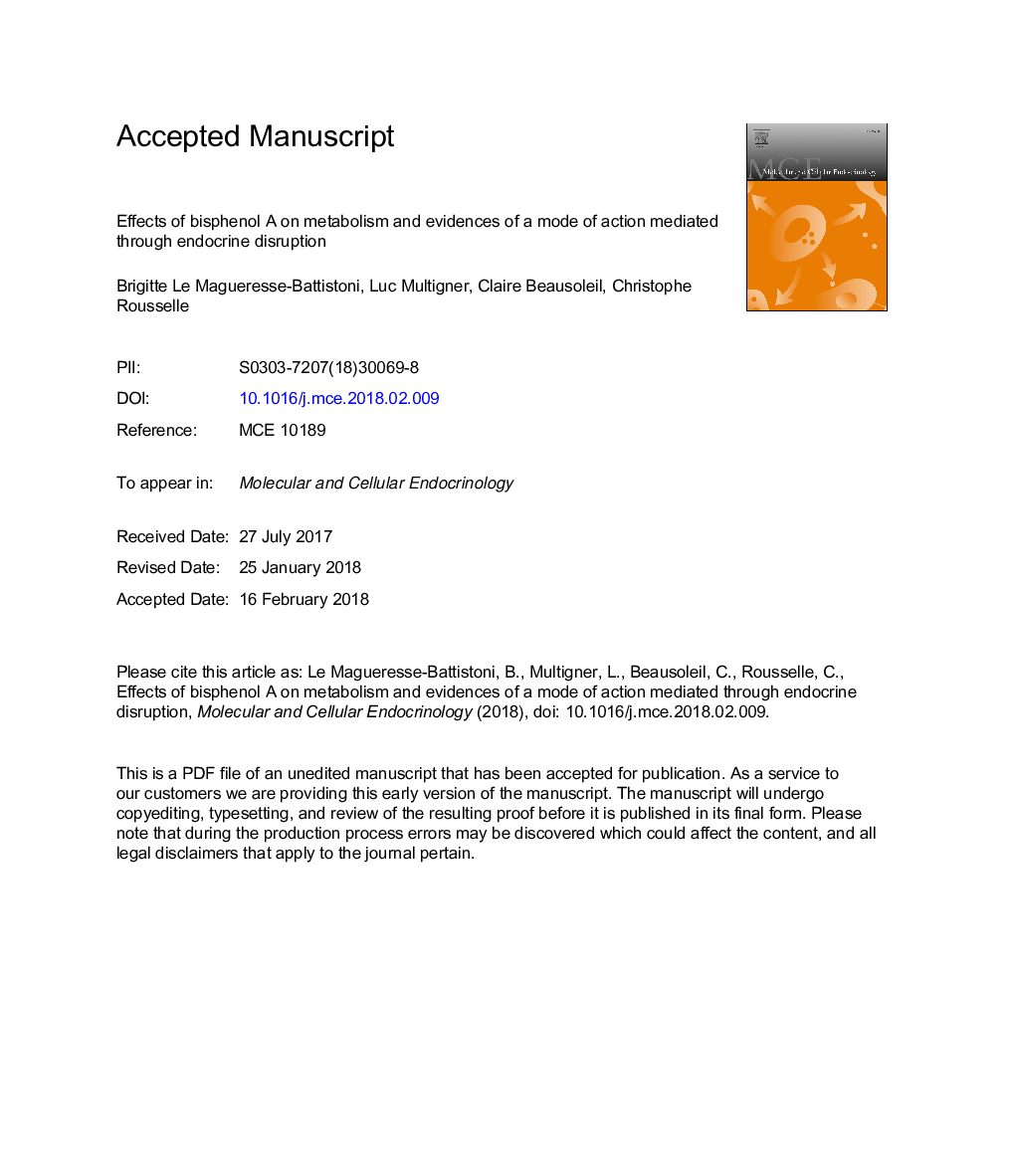| Article ID | Journal | Published Year | Pages | File Type |
|---|---|---|---|---|
| 8950009 | Molecular and Cellular Endocrinology | 2018 | 38 Pages |
Abstract
Although epidemiological studies are inconclusive, these effects are considered relevant for humans, because similarities exist in homeostatic regulation of insulin production and sensitivity between rodents and humans and because evidence was also shown through in vitro experimental data using human cells or tissues.
Keywords
IRS-1HFDPPARγBATFABP4TBTNHANESTributyltinTDIERRNHSEGFRGLUT4MOAMDINEFAIAPPIPITTGSISEstimated glomerular filtrationNurses' Health Study IINHSIIGTTPI3KPNDBPAMSCsGSHIPGTTEndocrine disruptionPPREDESnon-esterified fatty acidsinsulinWhite adipose tissuebrown adipose tissueBisphenol AGlucose-stimulated insulin secretiontriglycerideglucose tolerance testMode of actionInsulin sensitivityDiethylstilbestrolType 2 diabetestype-2 diabetes mellitusROSIgestation daypostnatal dayrosiglitazoneHigh fat dietinsulin receptor substrate 1SODMesenchymal stromal cellsSuperoxide dismutasebody mass indexBMIphosphoinositide 3-kinaseendocrine disruptorObesityTolerable daily intakeNurses' Health StudyGlucose transporter type 4body weightWestern blotfatty acid binding protein 4Islet amyloid polypeptideWATEstrogen-related receptor gammaGlutathioneEstrogen receptor αEstrogen receptor betainsulin receptorEstrogen related receptorPeroxisome proliferator activated receptor gamma
Related Topics
Life Sciences
Biochemistry, Genetics and Molecular Biology
Cell Biology
Authors
Brigitte Le Magueresse-Battistoni, Luc Multigner, Claire Beausoleil, Christophe Rousselle,
